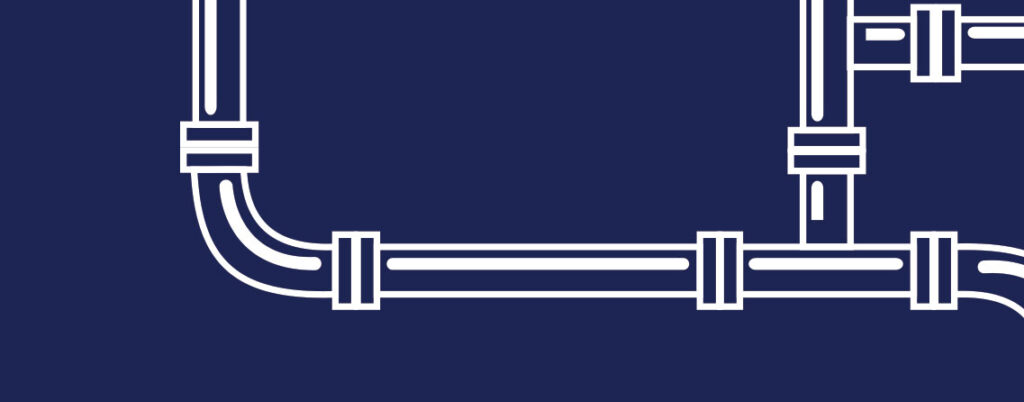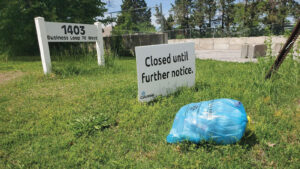Construction is still a few months away, but customers began paying more in November.
Construction is expected to begin this summer on a long-awaited, $25 million upgrade to the city’s water treatment plant at McBaine, which has been operating at only about 75 percent of its water treatment capacity since 2016.
The city’s finance department worked to close a $23 million bond sale in October as authorized by a $43 million bond issue approved by Columbia voters in 2018. To retire the new bond sale, residential customers began paying an extra $2 per month base charge in November — an increase from $10 to $12 — with commercial customers’ rates increasing proportionally based on the customer’s water meter size.
In November, the Columbia City Council approved an ordinance to authorize construction of the first phase of McBaine water treatment plant upgrades, anticipating the cost for the base bid improvements at $25 million. Further upgrades, which likely will require another bond issue, are estimated to cost between $15 million and $20 million.
The 2018 bond issue for water system improvements dedicated $23 million to the water treatment plant upgrade, with the other $20 million paying for other water system needs.
“The project will restore the plant’s capacity to treat thirty-two million gallons of water per day” and includes several “rehabilitation and replacement projects,” according to a city council memo. City staff reported that some equipment in the facility “is nearing the end of its useful life and must be replaced.” While the plant has a rated capacity of thirty-two million gallons per day (MGD), it only has the ability to reliably treat twenty-four MGD.
Additionally, a long-range water system study in 2015 determined there was “insufficient treatment capacity at the McBaine [plant] to meet anticipated future demands within the study planning horizon” through 2033.
The city Water and Light Department expects to bid the project this winter and award a construction contract by this spring, with construction beginning this summer. Construction is expected to take twenty-four months.
The water treatment plant treats water pulled from fifteen wells in the McBaine bottoms with average depths of about ninety-five feet, providing Columbia with an average of twelve million gallons of water a day. The plant is less than two miles east of the Missouri River. Formed from glacial deposits along the river’s edge, the aquifer holds some forty-four billion gallons of naturally filtered water, which is then secondarily treated at the city’s water treatment plant before being piped to customers. A report from the Source Water Protection Task Force to the Columbia City Council showed that the McBaine aquifer is replenished by the Missouri River, rainwater, and groundwater flow from higher elevations.
The McBaine water treatment plant was built in 1970, with substantial upgrades and expansions in 1994 and 2007. The plant, located 12 miles south of Columbia, treats and transports water to 51,000 customers — a population of more than 126,000 people — in Columbia’s 89-square-mile service area.
In August 2018, Columbia residents voted overwhelmingly in support of Proposition 1, a $42.8 million water bond issue, with almost 82 percent of ballots cast in favor of the bond issue. A little more than half of the bond, $23 million, will go toward the city’s water treatment plant.
About $10.2 million went toward upgrading storage units and pumps at the West Ash pumping station. Another $5.25 million was spent to replace and relocate water mains and $1 million went for upgrading well platforms. A new water tower in southwest Columbia and a new pumping station in southeast Columbia were also on the list of projects.
In total, Water and Light officials said the projects provide several benefits to Columbia water customers, including:
- Continuing to meet customer expectations of reliable, safe and affordable water service.
- Restoring previous water treatment capacity.
- Enhancing water treatment and distribution operational controls and efficiency.
- Improving finished water quality using existing treatment processes.
- Establishing long-range water-quality goals informed by treatment costs and benefits.
Though the 2018 bond issue had strong support, some who favored the bond issue said the city did not go far enough to address water quality issues. For instance, one citizens’ group recommended removing all chloramines from drinking water, but that action had an estimated pricetag of $40 million. Water and Light officials had said that if bond had not passed, the city would have been forced to raise water rates 30 percent over the next five years to fund improvements.
Remaining parts of the original plan from 2018 deferred into a second phase are a higher-priority $4.1 million in “Add Alternate Improvements” and $18.2 million in “Deferred Improvements” bringing the total project cost estimate to $47.1 million. “Add Alternate Improvements” include a new maintenance building, filter building improvements and a re-carbonation chemical feed system. “Deferred Improvements” include major electrical improvements, a new filter header and high service pump building.
Water and Light engineering supervisor Shawn Carrico told city council members that the deferred improvements included replacing equipment that was near the end of its lifespan. He said those improvements would be needed within the next ten years.
“I wouldn’t want to defer them any further than that,” he told council members, adding that the deferred improvements would “likely have to be part of the future bond issue.”

How Columbia’s Water Treatment Works
Water arrives at the McBaine Water Treatment Plant from water withdrawn from the Missouri River alluvial aquifer, via 15 so-called shallow wells (around an average of 95 feet deep) in the McBaine bottoms.
- The water is exposed to air to oxidize it, which reduces levels of iron, carbon dioxide and hydrogen sulfide, which are naturally found in groundwater supplies.
- Next, water is softened by adding lime to the oxidized water. Water softening removes about 50 percent of hardness-causing minerals from the water, which reduces scale formed in water heaters and pipes and allows residents to use less laundry detergent.
- Once softening has occurred, water goes through a filtration process to remove particles that carry over from the softening process.
- Finally, the water is treated through disinfection to prevent disease-causing microorganisms.
Once the water has gone through these four steps, it is ready for residential and commercial use.
Will the process change with the McBaine Water Treatment Plant Improvement Project?
Columbia Water and Light officials says the initial phase of the McBaine Water Treatment Plant Improvement Project will not fundamentally change the current water treatment process, but the rehabilitation and replacement of key equipment and facilities “will provide much greater operational controls and efficiencies, enhance treatment performance and reliability and provide higher-quality water” for customers.
For a more detailed explanation of the water treatment process, visit como.gov/utilities/water/#tab4









